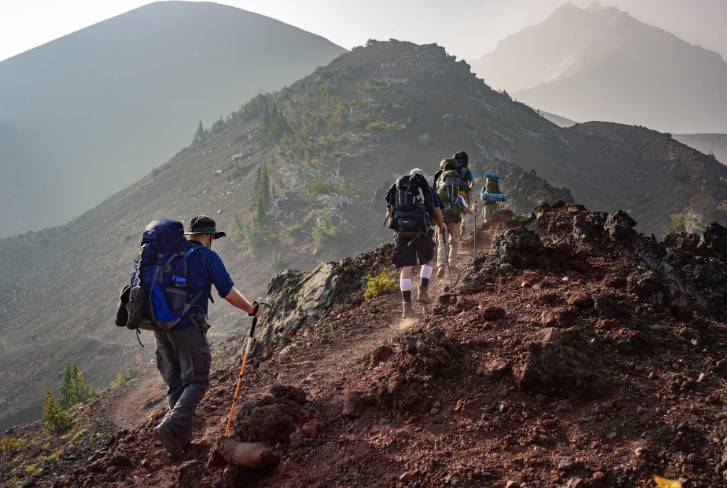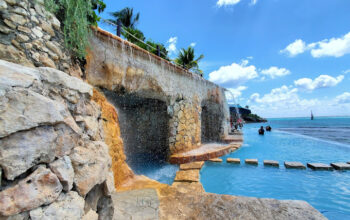Peak Climbing may sound fun and adventurous but it’s certainly no gag. An amazing mountain hike must tick a few boxes including accessibility, difficulty level, and adaptivity. Trekkers have to validate if the trip to the mountain on their bucket list is even a climb for walker or not
Nothing is more important than the climber’s fitness and endurance power to take over the summit. Hence, the climbing peak you decide to go with must be achievable. There’s no point climbing the mountain and enduring so many pains if you can’t even make it to half.
For beginners as well as professionals who prepare to take on giant snow peaks like Everest has to start with short-length mountains. It can be of any elevation from 5,500 to 6,500 meters, but the one in-between sounds more appropriate and fun.
6000 may be another random number for most of us but to mountaineers, it sums up their whole journey from base to the top of a mountain. The trek normally starts from lower hills to base camp passing traditional Nepali villages, narrow ridge, and forest.
All 6000m climbing peaks in Nepal are roosted in the lap of Himalaya so the climbers will come across ancient monasteries and mani walls. The lovely view of cascading rivers and snow-capped mountains is a payoff for walking that long distance.
The trek above base camp too provides scintillating view but at a greater cost. Mountaineers have to run over rocks and escalate snow cliffs to reach the summit. The views are spectacular though with a range of mountains in front of the sight. The 6000m climbing peaks Nepal which provides the climber with such splendid views are as follows.
1. Pisang Peak Climbing
Maximum Altitude: 6091 meters
Pisang Peak may not have all eyes on it but that doesn’t mean it’s not worth doing. Every bit of this trek drips scenic beauty and elfin landscapes that are something to see. The trail after lower elevation is quiet as a mouse but still engaging with picturesque vista.
Nestled in the north of Manang Valley at Annapurna Circuit, Pisang is an angular, sharply pointed mountain of a pyramid shape. At 19,983 ft, it’s a moderate trekking mountain with 33 miles long trail starting from Besisahar.
The trek route is not as easy as it seems with rocks and steep to scale before glaciers make its way in. Mountaineers have to come across remote settlements, old monasteries, Chorten until base camp, then ascend the ice slope and open gully. This indeed makes Pisang Peak Climbing one of the finest 6000m climbing peaks Nepal has to offer.
2. Chulu East Peak Climbing
Maximum Altitude: 6584 meters
Steep-topped Chulu East Peak is another glorious mountain at Annapurna Circuit in Manang that hosts climbers of all skills. It’s the peak with a less technical climb and great prize in terms of both experience and sight.
The trail of Chulu East Peak is 31.5 km long from Chame winding through Juniperus Indica forest and stunning Humde Village. Climbing the glaciated terrain and ice slope will push trekkers to their limit before even reaching the horizontal slant of the mountain.
Trails at lower hills are not easy either with sharp hills and stone stairs to scramble every other day. Walking high cliffs is strenuous but worthwhile with the astonishing view of Annapurna range and Dhaulagiri.
Locals here are the most generous than anywhere else in the world so you’ll have a good time walking the villages of Pisang and Jomsom. Strolling the forest doesn’t hurt either, instead, it has climbers run across different wild species and birds ahead of white snow.
3. Island Peak Climbing
Maximum Altitude: 6189 meters
Island Peak Climbing has been a favorite of every novice mountaineer for a long time given its easy accessibility and shorter length. The mountain rises high up to 20,305 feet over valleys and rocks before reaching the summit.
It follows the same route as that of Everest Base Camp until Dingboche and then runs toward marvelous Chhukung Valley. The trek above Island base camp is relatively tough, therefore, most hikers spend at least a day on acclimation.
This helps them adapt to the weather and climate at the mountain where the level of oxygen is pretty low. The climb on the ice sheets and moving glaciers is super challenging and tiring as well. Wet mount slides are normal on the sloppy terrains of the mountain which trekkers have to watch out.
The trail of Island Peak has been traversed so many times and yet the beauty and value haven’t faded once. The underlying natural splendor in the valley and hills looks fantastic as always. In the spring season, there are wildflowers and rhododendrons all through the forest giving a magnificent view.
4. Mera Peak Climbing
Maximum Altitude: 6476 meters
Just in case, you don’t have patience and the strength to endure difficulties, drop an idea of ascending Mera Peak as the trek is quite tough. Standing at an elevation of 6,476 meters in the Mahalangur section, Mera Peak Climbing is a blend of both easy and technical climbs.
The trail is comparatively less hard and short than most mountain treks but still grueling. Climbing on the steep terrain requires great mountaineering skills both physical and mental. Bad weather is too common on the way to top so be fully prepared to combat severe climate.
The mountain lies at Hinku Valley and thus climbers will have to fly up to Lukla. The start point for the trek is Paiya which moves through Ningsow and Thaknak to arrive at Mera High Camp.
The precipitous cliffs and high hills are the sections where most trekkers stressed out but other than that, it’s fun walking the jagged trail. The luscious forest and vibrant valleys put up an incredible view while hiking to the summit. With that Mera Peak claims to be the premier choice for 6000m climbing Peaks Nepal.
5. Lobuche Peak Climbing
Maximum Altitude: 6119 meters
Compared to its neighboring mountain Pumori and Lhotse, Lobuche is way easier to surmount with just an elevation of 6,119 meters. It’s usually trekked on the east side by mountaineers as a groundwork before ascending Mt. Everest.
Tucked in Khumjung near Khumbu glacier, Lobuche is a peak for beginners. It commences with an easy climb from Lukla to Namche Bazaar, an ingress to Everest. Starting from here, the trail walks sheer terrains and craggy hills to reach Tengboche.
This small village on the way to Lobuche is tremendously gorgeous with a century-old Tibetan monastery and good-natured locals. Visitors are allowed to visit the gompa every evening and take a peek into the culture. The reward for Lobuche Peak Climbing is the closer look at Everest and the nearby mountain including Nuptse, Changtse, and Gyachung.
Mountaineering Equipment
Mountaineers will need a lot of equipment while climbing a mountain as the basic items are never enough. To decide what you need while ascending snow peaks, first, you’ve to know its length and how technically difficult it is. In the case of 6000m climbing peaks Nepal, you’ll need the following gears to successfully ascend the summit.
- Mountaineering Boots: Must be insulated with waterproof outer shells to prevent getting it sticky
- Crampons: made of steel with a sharp spike underneath provides better traction. The heel binding of crampons should be flexible enough to keep it attached.
- Ice Axe: comes in different sizes and weights and thus, has to be carefully chosen. Any classic size of 55 cm to 75 cm length is perfect for climbing steep snow chutes. It can be both regular straight shaft or curved with a sharp head
- Fixed Rope: vary in diameter, length, and the way it’s treated to last long. The standard size of a fixed rope is 60 meter but you can have shorter than that to cut back weight.
- Carabiner: Locking or non-locking, you can use either of the carabiners but the open ones are easier to use. They also build alpine quickdraws and give more protection.
- Mountaineering Tent: 4-season tents are more durable and resilient to resist strong wind and cold than 3 season tents. They are warm and light to carry even at a distant hike.
Climbing Harness: Specially designed climbing harness is more convenient while climbing mountains of 6,000 meters and above. They are made of flat webbing and feature a leg loop buckle.
Related Posts












